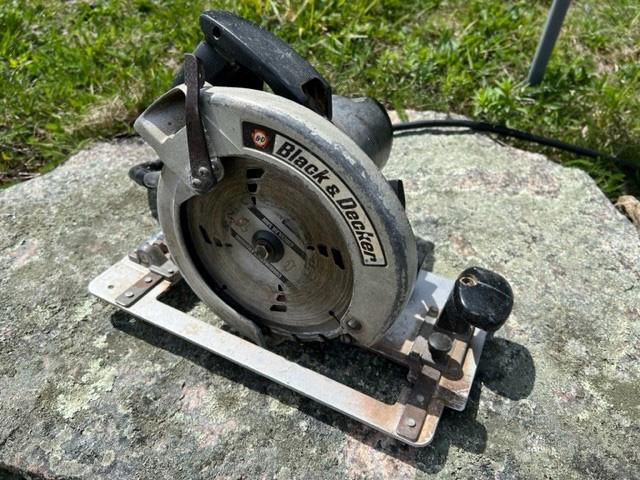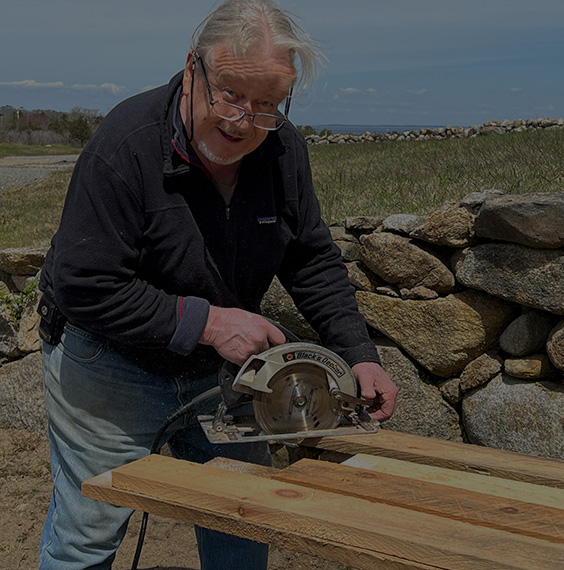Once sparsely populated by a few fishermen, farmers and sheep, Chilmark, Massachusetts remains a bucolic small town on the western half of tiny Martha’s Vineyard. The 100-square-mile island welcomes famous and wealthy visitors every summer, drawn by the pastoral scenery, Atlantic Ocean breezes and relative privacy.
Many of the people in Chilmark, whether full- or part-time residents, live in homes that were built or have been renovated by Dave Damroth. Just out of high school in 1971 and not moored to any people or location, Damroth moved from mainland Massachusetts to Martha’s Vineyard, where he had spent summers for most of his life. He quickly gravitated to construction, starting out with a small set of hand tools and learning from a demanding mentor.
“When I went to work for this guy, he said, ‘Hey, what you need is a saw, a block plane, a level and a hand saw,’” Damroth said. “That was my basic kit. It was all hand tools. And it wasn't until I started earning a little bit of money that I could afford to buy these tools.”
One of “these tools,” a Black and Decker Super Sawcat, remains in his arsenal more than 50 years after he bought it. The circular saw helped build his family’s first home, literally and metaphorically. Then, it helped build the second. Damroth considers it an engineering marvel that is as powerful and reliable as it was in the early 1970s.
“It's been a part of my body, really in a literal sense,” Damroth said. “It's an extension of what I am.”
Building the Vineyard
Martha’s Vineyard was home to Native Americans for thousands of years, with colonial settlers arriving about 1600. Fishing and farming were at the heart of its commerce, but in the mid-1800s a summertime religious retreat became the catalyst for the tourism that helps define the island today. At least two former U.S. presidents either vacation or have residences on the island, along with a host of movie and TV stars.
MORE CLASSIC TOOLS: 1800s-era plow keeps family farm thriving | Vintage planer shaped custom surfboards
Chilmark covers about 20% of the total land area of the island. There were fewer than 500 residents when Damroth arrived as a permanent resident and began his tradesman career. The town has gently swelled ever since, and it was up to about 1,400 people in 2021, according to the U.S. Census Bureau.
As those new residents arrived they needed places to live and stay, and that’s where Damroth was able to earn his keep.
“At 18, I worked for about three years with a very hardcore, really tough contractor in one of the island towns,” he said. “I learned as much as I could in three years, always feeling like I could do more. I went into business on my own when I was 21. I started as a carpenter doing almost anything for anybody that I could do to keep myself busy and paid. And of course, that over time developed into my contracting business.”
He built homes using unconventional approaches at the time, such as hyper-insulation and framing 24 inches on center, and he found ongoing success. The Super Sawcat has been at his side throughout, and Damroth is nearly evangelical about its construction and durability.
“This saw is engineered in a way that is completely adjustable so that once you set it, it is faithfully at absolutely 90 degrees,” he said. “There's a stop where it comes into the housing and the way that it works, it's got to swivel in the back so that when you raise and lower the depth, it's not some kind of clunky thing that you’re really having to really wrestle with. It's a very smooth action.

“I'm guessing the shoe must be 10 inches by at least 6½ inches wide. It's very wide and it has a detachable side plate so that you could cut within a half an inch of a wall. No saws did that stuff.
“When you're cutting a sheet of three-quarter inch veneer, like oak veneer plywood, that's like a couple hundred bucks a sheet and you come up to the end of a line and you take your finger off the trigger, it would just stop immediately,” he said. “And that’s a safety consideration, but also something where you're not fighting the blade that's just spinning on and on and on.”
The Sawcat also weighed 10 1/2 pounds, about 2 pounds more than many modern versions of similar size. Its durability probably goes without saying, but a Stanley Black and Decker representative said he’d heard stories of roofing companies that would lower the saw from a roof by its cord, then drop it into a sawdust pile rather than carry it down a ladder, fearing no damage from the drop. Damroth said his Sawcat survived a series of near-falls from roofs but continues to function. He keeps some spare parts around, including an extra shoe, brushes and a cord, in case he needs to fix it.
Mixing Old and New
Stanley Black and Decker discontinued the Sawcat in the mid-1990s when it converted its power tool brand to DeWalt. But that didn’t mean that Damroth couldn’t find something he loved in modern tool technology. He’s largely adopted cordless lithium-ion tools and is enamored of some of the European engineering that has informed power tool innovation. But that one hearty saw remains his favored tool.
Damroth is now mostly retired. Soon after the turn of the century he took a less-active role in homebuilding and began consulting, using his vast experience to help bridge communication gaps among contractors, architects and tradesmen. He’s had one knee replaced with the other set to follow in 2023 or 2024, and while his activity has slowed just a bit, the saw has not.
“That saw still goes,” he said. “It still goes.”
The information contained in this article is intended for general information purposes only and is based on information available as of the initial date of publication. No representation is made that the information or references are complete or remain current. This article is not a substitute for review of current applicable government regulations, industry standards, or other standards specific to your business and/or activities and should not be construed as legal advice or opinion. Readers with specific questions should refer to the applicable standards or consult with an attorney.








